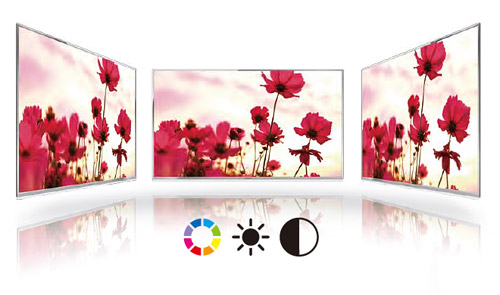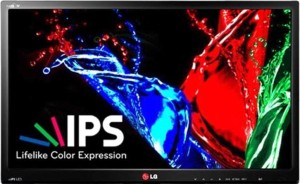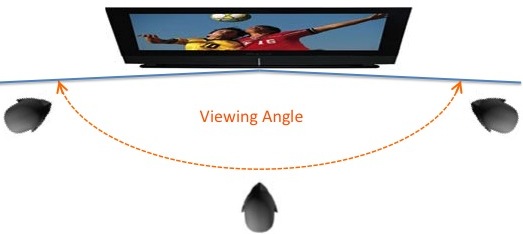
TVs are often a large part of the home tech experience. There are a lot of options for TVs (size, LED vs. plasma, smart features, inputs, etc.), and therefore, usually a lot of questions about these options. We’re looking at common TV options and some tips on what to look for. Last time we looked at: “Should I get a Smart TV?”, this week: “What do I look for in TV picture quality?”
TV picture quality is a topic that can quickly overwhelm us when we’re bombarded with tech lingo. The trick is to not get bogged down with terms like IPS technology or local dimming, but more with the picture quality outcomes of these.
TV types: Plasma & LCD
First, there are two basic types of TVs today: plasma and LCD (currently advertised as “LED” TVs). Although plasma TVs can have great picture quality, they are falling out of favour partly due to thickness, energy use and brightness, but mostly due to LED TVs being well marketed. Plasma TVs use gases and plasma to create the picture which requires more energy than LCD TVs. Plasma TVs are capable of deeper blacks than LCD TVs. Plasmas aren’t as bright as LED TVs though, and LED TVs are often winning even for rooms that aren’t overly lit. If you see a plasma TV that has a good picture and price, its still a viable option as they usually meet or beat the requirements outlined below for LCD TVs.
Picture Uniformity
LCD or Liquid Crsytal Display TVs work by polarizing liquid crystals to filter light like on a digital watch. LCD TVs need to do this for the red, green and blue parts of light. TV makers make it seem like LED is the new picture technology, but LEDs are now used to light the LCD screen from behind. Ideally the screen is lit uniformly. Less expensive models often have an uneven picture as makers have cheaped out on the LEDs or how they’re lit. Look at the picture across the whole screen for uniformity, especially in the TV’s comers. The more expensive TVs often have more LEDs and individual LED control to create a better picture (see Colour Accuracy below).
Speed & Refresh Rate
IPS is a LCD type commonly used today. Its pretty good in terms of  screen speed, viewing angle and colour accuracy. When LCD screens first came out, screens were pretty slow to change the picture. For fast moving TV action, you could notice it as ‘ghosting’ or picture lag. Refresh rate is how many times a second the screen picture is updated, and once per second would be 1Hz. TVs in North America are usually 60Hz (standard), 120Hz or 240Hz. Most TVs today are fast with smooth pictures, but watch to ensure slow ‘speed’ won’t cause you any grief.
screen speed, viewing angle and colour accuracy. When LCD screens first came out, screens were pretty slow to change the picture. For fast moving TV action, you could notice it as ‘ghosting’ or picture lag. Refresh rate is how many times a second the screen picture is updated, and once per second would be 1Hz. TVs in North America are usually 60Hz (standard), 120Hz or 240Hz. Most TVs today are fast with smooth pictures, but watch to ensure slow ‘speed’ won’t cause you any grief.
Viewing Angle
Most TVs also advertise viewing angle – likely something near 180 degrees, i.e. looking right from the side angles. Lesser TVs have picture quality that varies from side viewing. Compare the picture from extreme angles and directly in front. If viewing from the top or bottom is important in your home viewing take a look from those angles too.

Colour Accuracy
Colour accuracy is harder to verify in stores, as the average store showroom is very bright and therefore far from ideal for viewing. Colour accuracy is about being able to produce blacks and vibrant colours. While plasma TVs are good at displaying blacks, LCDs end up closer to dark greys. As mentioned above in Picture Uniformity, TVs with more control of the LED lights can help get better looking blacks and colours. Take a look at the screen and play with settings (usually its easy to change from the bright “demo” setting), and also read reviews on-line. Note though that both professional and amateur reviewers usually find at least one fault with products (sometimes on purpose), so don’t let them worry you too much.
What about OLED TVs?
You may have also heard about OLED (Organic Light-Emitting Diode) TVs. OLED promises extremely thin screens and excellent picture quality. There are many bugs to work out before those promises will be realized. The prices also have to drop to a reasonable level. Unless you’re well financed and a bleeding edge type, you don’t have to worry about OLED TVs for the time being.
Conclusions
If you’re interested, by all means dig in and learn about the technology details employed in TVs. Try to ignore the marketing tech jargon though, as you can accomplish a lot by just trusting your eyes.
A good LED backlit LCD TV will likely meet your needs. If you have videophile tastes, you may end up with a plasma. Be patient and do your research, or have someone guide you along. Either way, take your time with the TV picture settings menu or use some calibration tools when you set up your TV at home.
